Plates
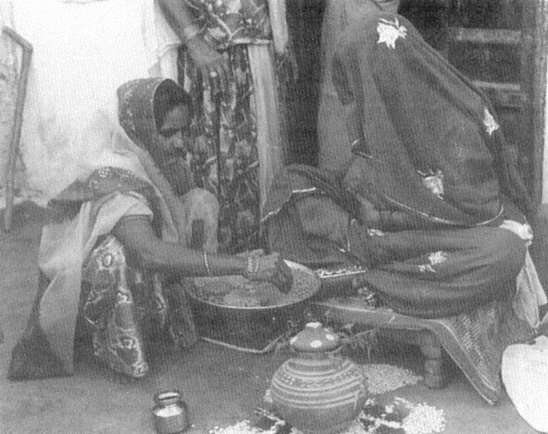
During Ann's first month in Ghatiyali a baby boy was born in the house where she lived.
For the ritual of Sun Worship, Pushpa, the new mother, sits veiled with her baby in her lap while the
Barber's wife holds a tray with offerings to the Sun God before her.
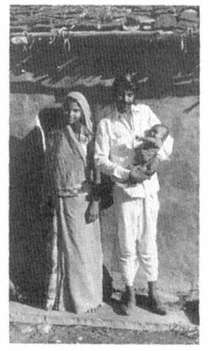
Pushpa and her husband,Gopal
Singh, with their new baby boy,
Durgesh, in Ghatiyali. Both Ann
and Gloria found that many young
wives eagerly desired to be
photographed by their husband's
side, face unveiled, although it was
clearly an unaccustomed and
strained pose for them to take.
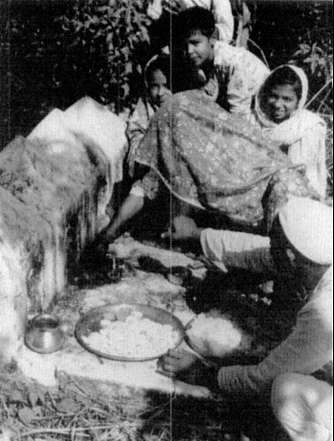
In Pahansu, Pahel Singh,his wife, Kalavati, and their
children worship at an ancestral shrine in the fields. Kalavati
is veiled both because of her husband's presence and
because women customarily cover their faces as they
approach these shrines dedicated to their deceased male
affinal kinsmen.
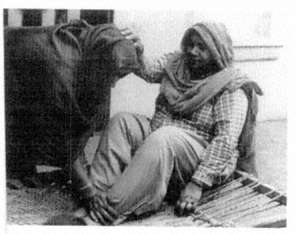
Shanti's legs are massaged by a young Gujar
bride in Pahansu. Women are expected to perform
this act of deference for the wives of their
husband's senior male kinsmen.
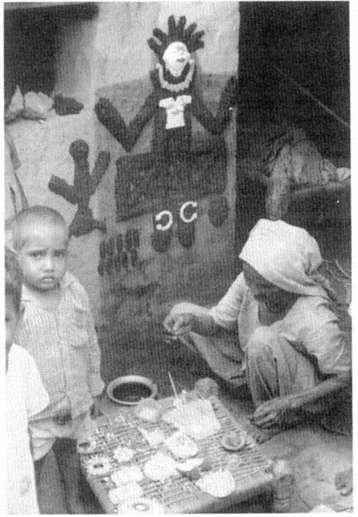
An image of Sanjhi Deviis constructed at the home of a
Sweeper woman in Pahansu for the Nine Nights festival. Like
the women who form her image,the goddess is adorned
with ornaments that embody her suhag, her marital good
fortune. At the festival in the month of Asauj, the goddess
is said to travel between her conjugal village and her natal
home. Women speak sorrowfully of how Sanjhi's brother
stays in one place, but the goddess must go away to her
husband's place. Like ordinary women, the goddess returns
only for a brief visit; she cannot remain ather pihar.
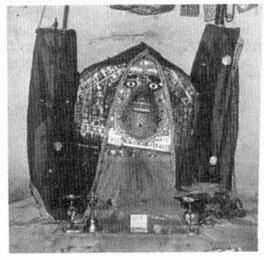
The icon of a powerful goddess at her
pilgrimage spot called Kuchalvara Mataji. Like
Rajasthani women, the goddess too is
wrapped in a glittery veil, although it does not
cover her face. Such wraps are offered at
shrines like this by pilgrims grateful for the
goddess's boons.

In Ghatiyali at the home of Ratan Lal Mehta,
a well-to-do Brahman whose son is about to be
married, women enjoy singing wedding songs
while the groom-to-be is anointed with turmeric.
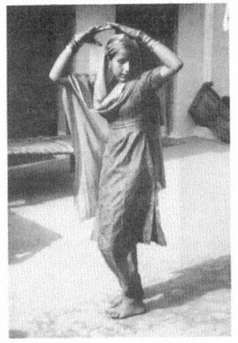
These three photographs were taken at
the same khoriya, in a Gujar courtyard in
Pahansu in March 1988. Women sang
and danced as a young man from the
house was married in a nearby village.
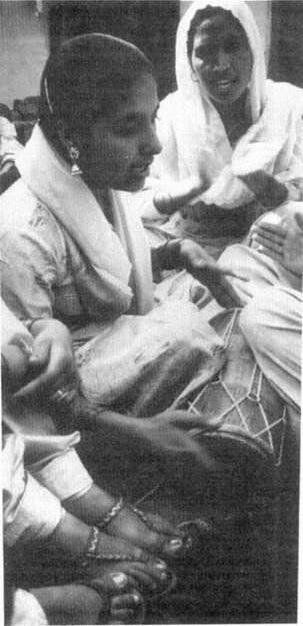
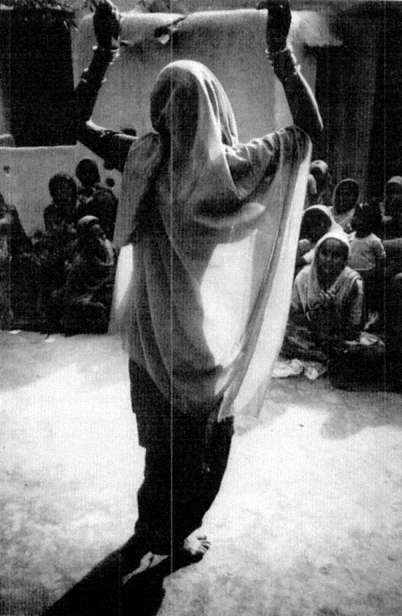
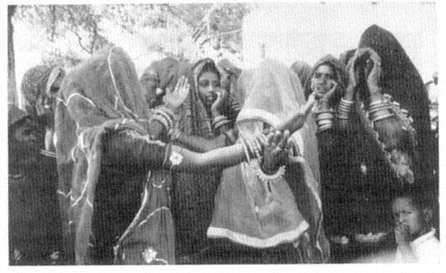
Gujar women sing in chorus during a funeral celebration in Kalera, a village
not far from Ghatiyali. Photo by Joseph C. Miller, Jr.

Women sing and dance at a religious fair at the shrine of Dev Narayan, called
Puvali ka Devji, just outside of Ghatiyali. Photo by Joseph C. Miller, Jr.
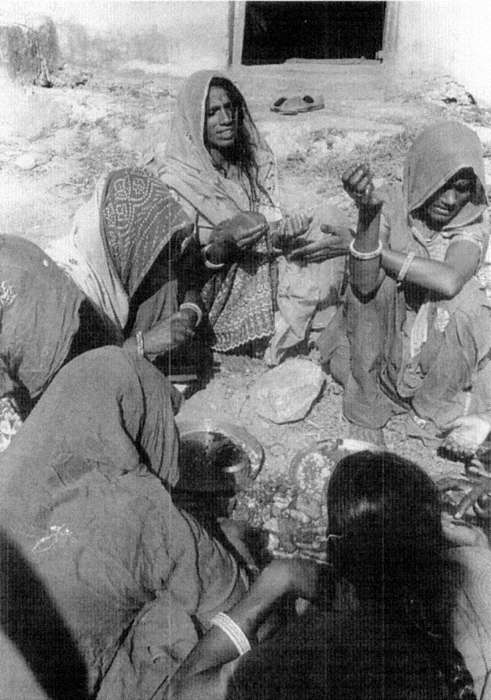
A group of women, neighbors, gather in front of Four Armed Vishnu's Temple in
Ghatiyali for the story of Cow Worship told on the morning of that festival day.
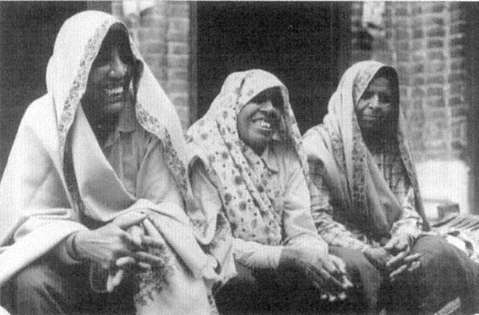
Three older women, all Gujars, gather together for a visit in Pahansu.
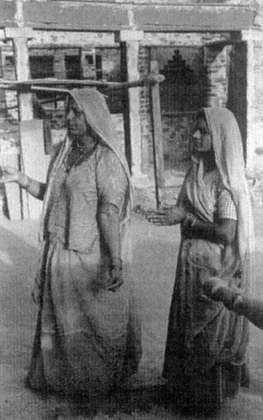
In Shobhag Kanvar'scourtyard, with the ongoing
construction of her new house as backdrop,
she and Sohan, a Brahman woman, pray before a
shrine to Dev Narayanji. Sohan has come
for help in conceiving a child.
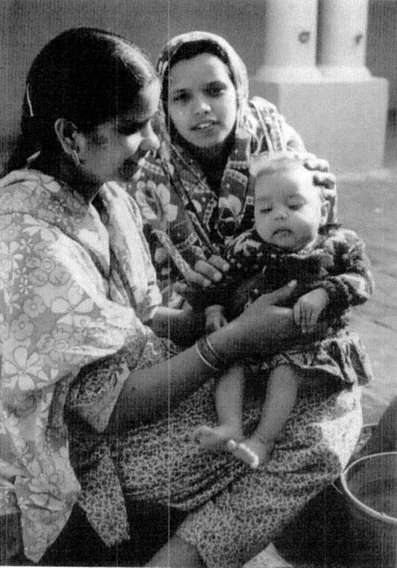
Simla and Santroj with Santroj's infantdaughter in Pahansu. Though
women often sadly murmur, "Ah, whatever God has given has been
given" at the birth of a daughter, and though girls do not receive many of
the advantages accorded to sons, girl children are usually treated with
love and affection.
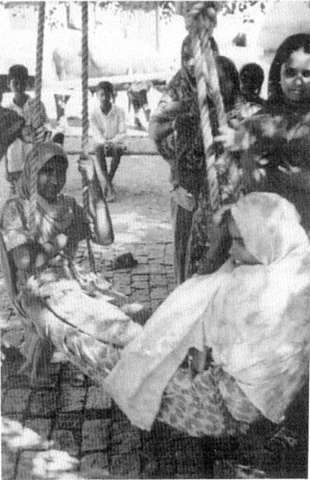
Women swing on rope swings and sing at the festival
of Tij in Pahansu. Perhaps the most powerful examples of
resistance to norms of wifely submission that we
recorded are voiced in these Tij songs

Shobhag Kanvar worships Diyari Ma, represented in this
Rahput home by the ancestral family swords. Diyari ma is worshipped
within families during the semiannual Nine Nights of the Goddess.
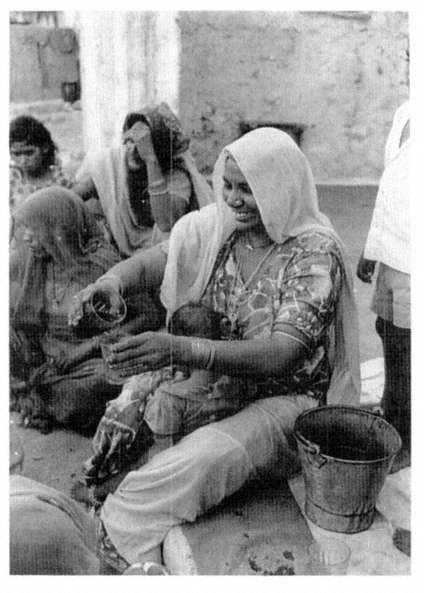
Shobhag Kanvar participates in celebratingthe birth of her husband's elder
brother's first grandson; in her lap is her own son's daughter. She smiles
as she pours bhang—a drink made with hashish.
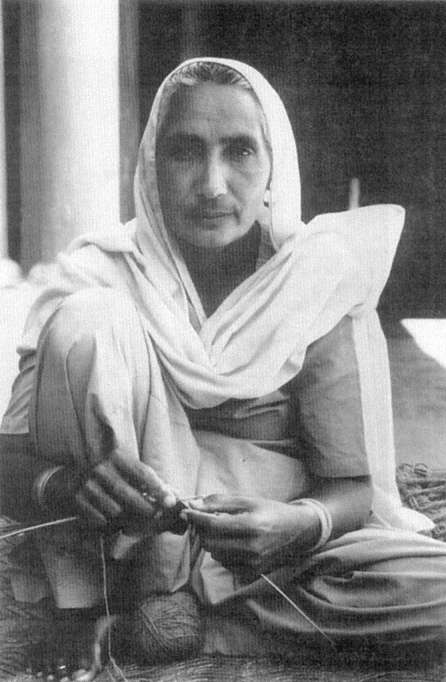
Tara, on a visit to her natal home in Pahansu.